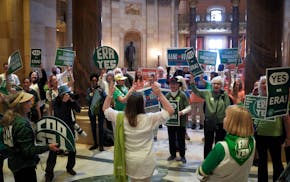Where does your alley lead?
In many of our minds, alleys have always led to the business end of dwellings: The trash can. Garages. Perhaps a basketball hoop or compost. But the alleys of tomorrow could work differently. In recent years, neighbors have moved to reinvent alleys. A story run by the Star Tribune last summer documented a community program in the Macalester-Groveland neighborhood, organizing neighbors to create gardens in local alleys. The gardens have attracted pedestrians and anecdotally, residents say enhanced alleys have reduced crime. Residents of Seattle are taking the same approach, inspired by the benefits observed in downtown alleys there. For all their modesty as urban features, alleys occupy quite a bit of space, and could be used more effectively to absorb stormwater, reducing stress on sewers and cutting the amount of polluted runoff released into our waterways. Alleys could also contain a solar and geothermal heating and cooling system for adjacent buildings. The City of St. Paul is served by about 230 miles of alleys; they occupy roughly 12.1 million square feet (270 acres) of area, and 222 million gallons of water fall on these alleys in a year of average precipitation. Metro totals aren't available – but clearly dwarf these numbers. How much solar energy could this alley surface harness? How many millions of gallons of rain water could be absorbed through this network if surfaced with more porous materials? In each case, alleys can be productive places, generating energy or reducing the costs we bear in the form of polluted runoff. More productive places mean we have more resources (public and private) to invest in [reader: insert your top priority here]. Alleys are all about utility; there's great potential to make alleys work harder for us in the future.

Minnesota Democrats announce deal on minimum pay for Uber and Lyft drivers
Man fatally shot in north Minneapolis Friday identified
Greenwashing or good stewardship? Minneapolis Park Board set to consider extending carbon offset program



